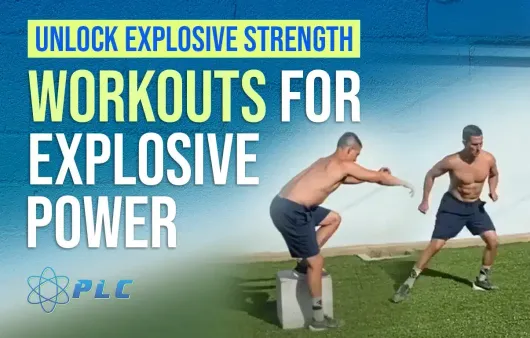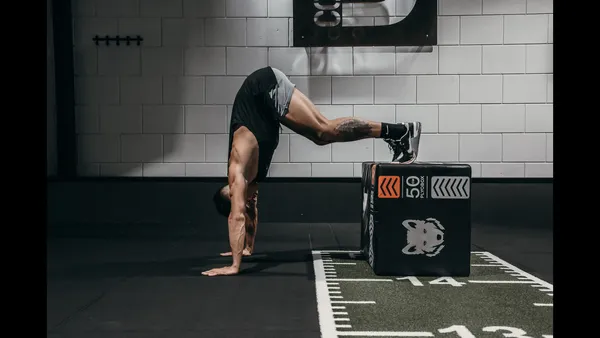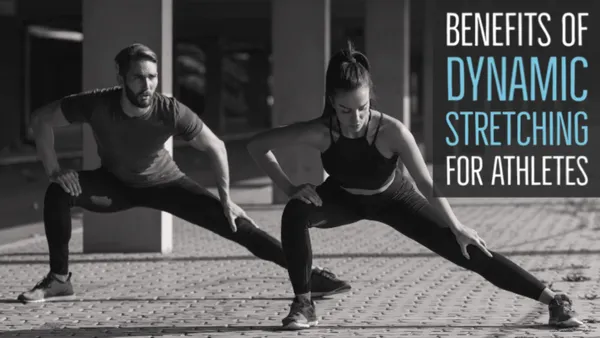Table of Contents
Calisthenics, also known as bodyweight training, is a form of exercise that uses your own body weight as resistance. It's a versatile and effective way to improve your fitness, and it offers a wide range of benefits for athletes of all levels. Whether you're a seasoned pro or just starting out, incorporating calisthenics into your training routine can help you reach your fitness goals. Here at kizworld, we'll explore the many benefits of calisthenics for athletes.
Benefit | Explanation |
|---|---|
Strength and Power | Calisthenics exercises like push-ups, pull-ups, and squats build muscle and improve overall strength. |
Flexibility and Mobility | Many calisthenics movements involve a full range of motion, enhancing flexibility and joint mobility. |
Injury Prevention | Strengthening muscles and improving mobility can help prevent common sports injuries. |
Recovery | Bodyweight exercises can be used for active recovery, promoting blood flow and reducing muscle soreness. |
Unlock Explosive Power: Benefits Of Calisthenics For Athletes
Calisthenics for Strength and Power
Calisthenics is like having a superpower – you can get strong and powerful using just your own body weight! It's like being a superhero who doesn't need fancy gadgets. 💪 Think about it: exercises like push-ups, pull-ups, and squats work multiple muscle groups at once, building functional strength and explosive power. It's like building your own fortress of strength from the ground up.
And the best part? You can do calisthenics anywhere, anytime. No gym membership required! You can turn your backyard into your training ground, or even use a park bench or playground equipment. It's like having a portable gym that you can take with you wherever you go.
- Famous Calisthenics Athletes
- Calisthenics Athlete Workout
- Best Calisthenics Athlete in the World
Exercise | Muscle Groups Worked |
|---|---|
Push-ups | Chest, shoulders, triceps, core |
Pull-ups | Back, biceps, core |
Squats | Legs, glutes, core |
Calisthenics for Strength and Power
Calisthenics for Flexibility and Mobility
Flexibility and mobility are like the secret weapons of any athlete. They're not just about touching your toes or doing fancy stretches – they're about moving freely and easily, without any stiffness or limitations. Think of it like oiling the hinges on a door: the smoother the hinges, the better the door swings open. Calisthenics helps you achieve that smooth movement in your body.
Many calisthenics exercises involve moving your joints through their full range of motion. This helps to increase flexibility in your muscles and improve mobility in your joints. It's like giving your body a gentle stretch and wake-up call, so you can move with grace and ease.
Boosting Your Range of Motion
Imagine you're a gymnast doing a split leap, or a basketball player reaching for a slam dunk. You need to have a wide range of motion to perform these moves! Calisthenics exercises like lunges, squats, and arm circles help you achieve that. They stretch your muscles and improve your joint mobility, allowing you to move with greater freedom and control.
- What is a Calisthenics Athlete?
- Calisthenics Athlete Meaning
- Top 10 Calisthenics Athletes
And the best part? Increased flexibility and mobility can help prevent injuries. When your muscles are flexible and your joints move easily, you're less likely to strain or pull something during your workouts or competitions. It's like having a built-in safety net for your body.
Calisthenics for Flexibility and Mobility
Calisthenics for Injury Prevention and Recovery
Calisthenics isn't just about building muscles and showing off cool moves – it's also about keeping your body healthy and injury-free. It's like having a personal bodyguard for your muscles and joints! 💪 When you do calisthenics, you're not just working on one specific muscle group, you're training your whole body to work together as a team. This helps to strengthen the muscles around your joints, which acts like a shield to protect them from getting hurt.
Think about it like this: if you're playing basketball and you suddenly have to change direction, your ankles need to be strong and stable to handle the quick movement. Calisthenics exercises like lunges and squats help to build that strength and stability, so you're less likely to twist your ankle or get injured. It's like giving your body the tools it needs to stay safe and sound on the playing field.
Active Recovery with Calisthenics
Even superheroes need a break sometimes, and that's where active recovery comes in. It's like giving your body a gentle massage after a tough workout. Calisthenics can be a great way to actively recover because it helps to increase blood flow to your muscles, which brings in all the good stuff they need to repair and rebuild. It's like sending in a team of tiny construction workers to fix any damage and make your muscles even stronger.
Light calisthenics exercises like bodyweight squats, lunges, and arm circles can help to reduce muscle soreness and stiffness, so you can bounce back faster and get back to doing what you love. It's like giving your body a refreshing drink of water after a long run – it helps you feel better and get ready for your next adventure.
Exercise | Benefits for Recovery |
|---|---|
Bodyweight Squats | Increases blood flow to legs, reduces soreness |
Lunges | Improves flexibility and mobility, promotes recovery |
Arm Circles | Gently stretches shoulder muscles, enhances blood circulation |
- Calisthenics for Athletic Performance
- Calisthenics Workout for Athletes
Calisthenics for Injury Prevention and Recovery
Final Thought
Calisthenics offers a unique and effective way to enhance athletic performance. From building strength and power to improving flexibility and preventing injuries, the benefits of calisthenics are undeniable. By incorporating bodyweight exercises into your training routine, you can unlock your full athletic potential and achieve your fitness goals.